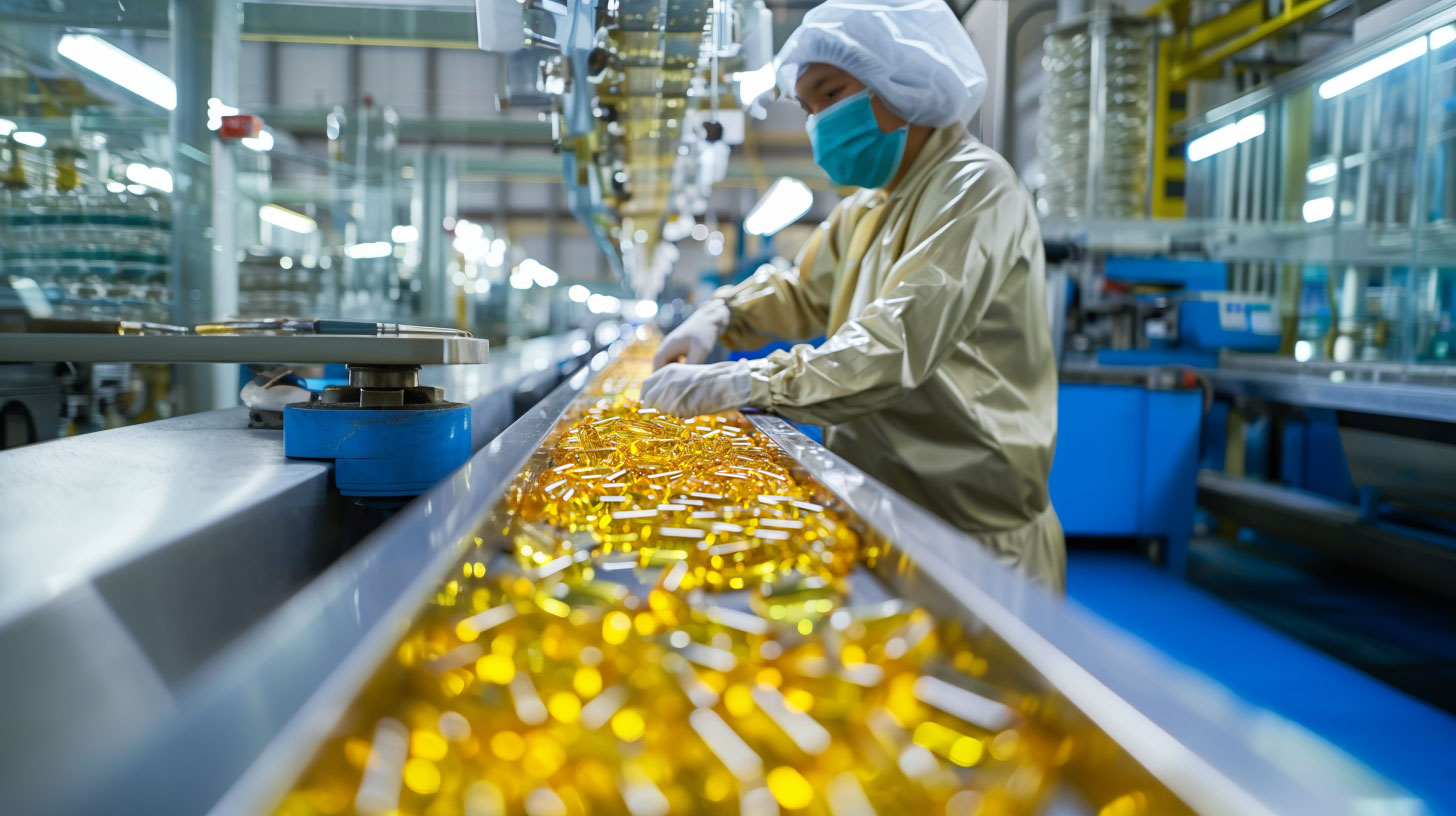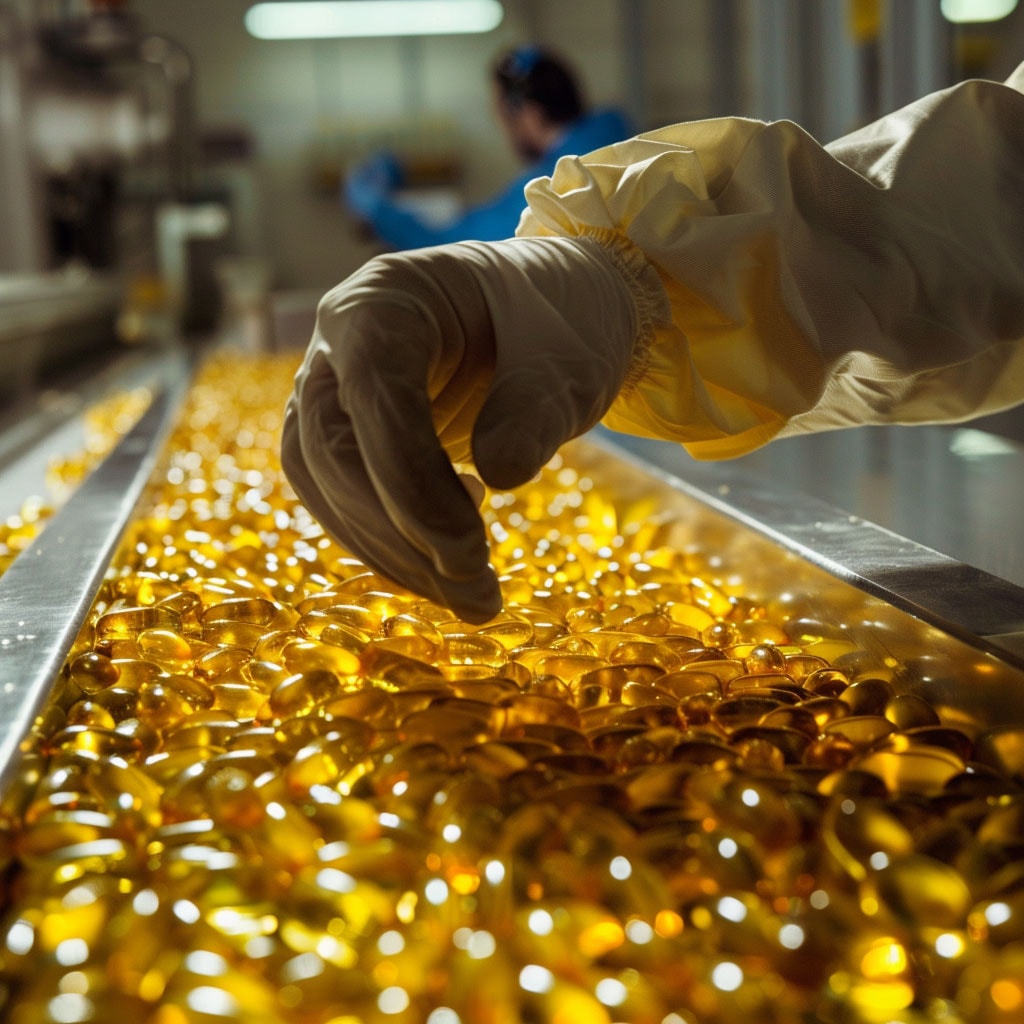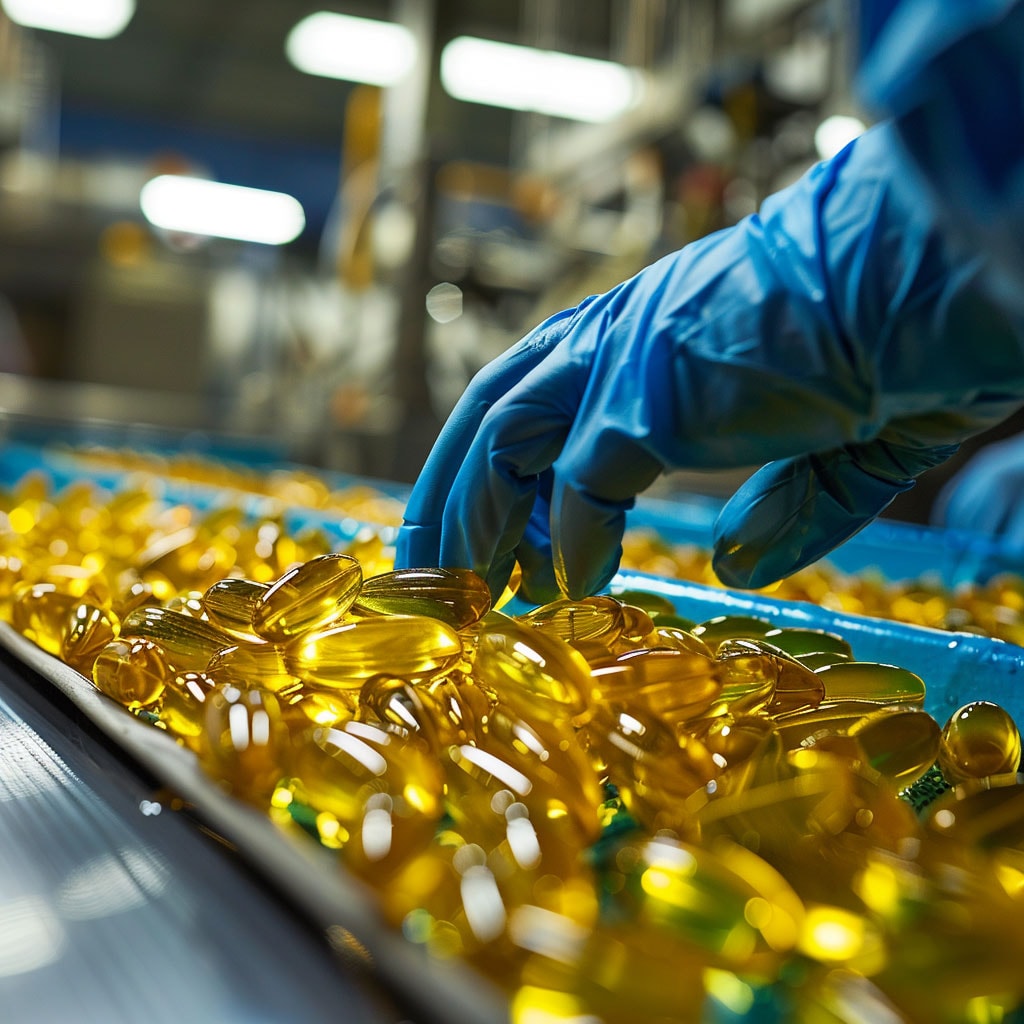
20 Feb Choosing the Right Softgel Encapsulation Machine for Superior Production Efficiency
Comprehensive Guide to Softgel Encapsulation Machines and Their Role in Softgel Capsule Production
Introduction to Softgel Encapsulation Machines
What is a Softgel Encapsulation Machine?
A softgel encapsulation machine is a specialized device used in the pharmaceutical and food industries to automate the production of softgel capsules. These machines combine a liquid or semi-liquid filling with gelatin-based outer shells to produce soft gel capsules of various shapes and sizes. The equipment plays a crucial role in efficiently and accurately manufacturing soft gelatin capsules for medicinal and nutritional applications.
Importance of Softgel Encapsulation Machines in Various Industries
Softgel encapsulation machines are essential in the softgel manufacturing equipment category, widely used to produce capsules for pharmaceuticals, supplements, and even certain food products. The demand for softgel capsules is high due to their easy swallowability, enhanced bioavailability, and ability to encapsulate oil-based ingredients. From vitamins and omega-3 fish oils to liquid supplements, these machines ensure the mass production of soft gelatin capsules while maintaining high precision and quality.
The Softgel Encapsulation Process for Soft Gelatin Capsules
Overview of the Softgel Encapsulation Process
The softgel encapsulation process is a complex procedure that involves the preparation of both gelatin and filling materials, followed by encapsulation, drying, and inspection. The machinery used ensures that the final product meets the necessary quality standards, adhering to CGMP and FDA requirements.
1. Gelatin Material Preparation
To begin, the gelatin is prepared by mixing gelatin, glycerin, purified water, and other ingredients like colorants. The mixture is heated and stirred in a gelatin melting tank until it forms a suitable gelatin solution. This gelatin ribbon is essential for creating the outer shell of the soft gel capsules.
2. Filling Material Preparation
Simultaneously, the fill material is prepared, which can consist of oils, suspensions, or active ingredients. This preparation takes place in auxiliary equipment such as dispensing tanks, colloid mills, or emulsifying tanks. The machine then injects this fill material into the gelatin ribbon during the encapsulation process.

3. Softgel Encapsulation
The encapsulation phase involves combining the gelatin ribbon and the filling material using softgel encapsulation machines. A spreader box spreads the gelatin evenly, while the machine injects the fill material into the gelatin ribbon. As the die rolls press the ribbons together, the softgel capsules are sealed and cut into the desired shape and size.
4. Drying and Finalizing the Capsules
Once encapsulated, the softgel capsules must be dried. This process typically begins with tumble drying, followed by air drying in specialized tumble dryers or drying tunnels to ensure the capsules maintain their form and durability. The capsules are then ready for the final step.
5. Inspection and Sorting
Before packaging, the capsules undergo thorough inspection and sorting. Any defective capsules are removed, and the remaining high-quality softgel capsules are sorted and packaged according to industry standards.
Key Features of Softgel Encapsulation Machines
1. Servo Drive for Speed and Stability
The softgel encapsulation machine is equipped with a servo drive system, which eliminates the need for timing gear. This design increases operational speed and ensures consistent, stable production, especially during high-demand production cycles.
2. Automatic Die Alignment System
An automatic die alignment system ensures the continuous operation of the machine. This system keeps the die roll perfectly aligned, reducing production downtime and ensuring that the capsules are formed precisely.
3. Micro-Lubricant Technology
Another feature of softgel encapsulation machines is micro-lubricant technology, which significantly reduces the need for cleaning and maintenance. This technology ensures that the gelatin ribbons and capsules do not stick to the machine, maintaining production efficiency and minimizing machine wear and tear.
4. Cold Air System for Gelatin Handling
The cooling system ensures that the gelatin remains manageable during the production process. A cold air system located near the gelatin exit point ensures that the gelatin doesn’t stick to the pill-dropping unit, keeping production clean and efficient.
5. PLC and Touchscreen Controls
The control systems of these machines are operated via PLCs (Programmable Logic Controllers) with touchscreen interfaces, allowing operators to adjust settings easily. The system provides real-time feedback on the encapsulation process, enabling operators to monitor everything from capsule size and fill volume to operational speed.
Technical Specifications of Softgel Encapsulation Machines
1. Machine Models and Capacities
Various models of softgel encapsulation machines are available to meet different production needs. For example:
-
Model 250II has a production capacity of 115,440 pills per hour, requires 12kW of power, and weighs 1500kg.
-
Model PSG-120 has a smaller production capacity of 40,800 pills per hour, requires 10kW of power, and weighs 1000kg.
2. Mould and Pump Accuracy
Each machine is equipped with precision moulds and pumps. These moulds are capable of producing capsules with accurate filling volumes (as fine as ±1% for oil-based fillings). This level of accuracy ensures minimal product waste and consistent quality in every batch.
3. Power and Weight Considerations
Different machines require varying power capacities, typically between 10kW to 12kW, and weigh between 1000kg to 1500kg. These machines are robust and suitable for large-scale production, making them ideal for high-demand manufacturing environments.
Differences Between Capsules and Encapsulation
Capsules vs. Encapsulation: Key Differences
-
Capsule: The term capsule refers to the finished product, which consists of the gelatin outer shell and the fill material inside.
-
Encapsulation: The encapsulation process involves the creation of capsules using an encapsulation machine that combines the gelatin ribbon and the fill material to form a sealed capsule.
The Advantages of Softgel Encapsulation Machines
1. Increased Production Capacity
With the ability to produce up to 230,880 softgel capsules per hour, these machines significantly enhance production efficiency. Their high throughput makes them ideal for large-scale manufacturing environments in industries such as pharmaceuticals and nutraceuticals.
2. Improved Product Quality
The advanced features of softgel encapsulation machines, such as micro-lubricant technology and precision filling systems, ensure that each capsule is manufactured to the highest standards. The filling volume is consistent, and the capsules are uniform in size, shape, and weight.
3. Customization and Flexibility
Softgel machines offer versatility in terms of capsule sizes, fill materials, and encapsulation speeds. This flexibility allows manufacturers to meet varying production requirements and produce capsules with specific characteristics, such as those that are easy to swallow or contain liquid fills.
Choosing the Right Softgel Encapsulation Machine
1. Key Factors to Consider
When selecting a softgel encapsulation machine, manufacturers must consider:
-
Production capacity: Ensuring the machine meets their production demands.
-
Power consumption: Selecting a machine with appropriate energy requirements.
-
Filling accuracy: Ensuring precise fill volumes to reduce waste and improve efficiency.
2. Maintenance and Reliability
The long-term success of any softgel encapsulation machine depends on its reliability. Regular maintenance, easy cleaning, and access to a user manual are essential for keeping the machine running smoothly. Machines equipped with advanced technologies, such as PLC control systems, require minimal manual intervention, which reduces the chance of human error.
Conclusion
The Role of Softgel Encapsulation Machines in Modern Manufacturing
Softgel encapsulation machines are crucial for efficiently producing high-quality soft gelatin capsules in large quantities. With advancements such as automatic die alignment, micro-lubricant technology, and cold air systems, these machines have revolutionized the production of soft gel capsules for pharmaceuticals, nutraceuticals, and food industries.
Choosing the Right Machine for Your Production Needs
Selecting the right machine requires careful consideration of production capacity, energy consumption, and advanced features like automatic die alignment and PLC control systems. By choosing the appropriate machine, manufacturers can ensure efficient production and maintain high product quality in compliance with industry standards like CGMP and FDA requirements.
FAQ
What is a Softgel Encapsulation Machine?
A soft gel encapsulation machine is a specialized piece of equipment designed for producing soft gelatin capsules, which are commonly used in the pharmaceutical, nutraceutical, and food industries. These machines are responsible for transforming liquid or semi-liquid substances into gel-coated capsules. The soft gel encapsulation machines operate by combining a gelatin-based outer shell with the internal fill material to produce uniform and precise softgel capsules.
The soft gelatin encapsulation machine performs several critical functions, including the mixing of gelatin, the accurate injection of fill materials, and the precise cutting and sealing of the gelatin ribbon around the active ingredients. The machine’s primary role is to ensure the continuous production of softgel capsules, maintaining high precision in terms of fill volume and shell thickness.
These machines are integral to the mass production of soft gelatin capsules used in everything from dietary supplements to over-the-counter medications. Their advanced designs often incorporate automated systems, such as PLC (Programmable Logic Controller) controls and servo motors, which enhance operational accuracy and efficiency. Without a reliable soft gel encapsulation machine, manufacturers would face significant challenges in producing the high-quality softgels that meet industry standards.

What is the Process of Encapsulation for Soft Gelatin Capsules?
The encapsulation process for soft gelatin capsules is a complex, multi-stage operation that requires both precision and consistency to achieve a high-quality product. The process typically starts with the preparation of the gelatin solution, where gelatin, water, glycerin, and sometimes colorants or flavorings are mixed together in specialized gelatin melting tanks. This mixture is then heated until it reaches a uniform consistency, making it suitable for the formation of the capsule shell.
Once the gelatin is ready, the soft gelatin encapsulation machine begins the actual encapsulation process. The gelatin is formed into two ribbons that feed into the machine’s die roll system. Meanwhile, the fill material (which could be an oil, liquid, or suspension) is prepared in a separate system. This fill material is injected between the two gelatin ribbons as they pass through the soft gel encapsulation machine, which then seals the ribbons around the fill to form individual softgel capsules.
After the capsules are formed, they move through a drying process, typically involving tumble dryers and drying tunnels, to remove any excess moisture. This drying step is crucial for ensuring that the capsules maintain their shape, structure, and stability over time. At the end of the process, the capsules are inspected for quality, sorted, and prepared for packaging.
The entire encapsulation process is automated in modern soft gel encapsulation machines, which improves both production speed and product quality. The machines are equipped with features such as micro-lubrication technology and servo-driven motors to ensure smooth operations, preventing problems like capsule sticking or filling inconsistencies.
What are the Differences Between Capsules and Encapsulation?
While the terms “capsules” and “encapsulation” are often used interchangeably, they refer to different aspects of the manufacturing process. A capsule is the final product that encapsulates a specific dosage of a liquid, semi-liquid, or powder form of a drug, supplement, or nutrient. Capsules can be made from gelatin, plant-based alternatives, or other materials and come in a variety of sizes, shapes, and fill types.
On the other hand, encapsulation refers to the actual process of creating these capsules. During encapsulation, the soft gelatin encapsulation machine or soft gel encapsulation machines combine the gelatin shell with the internal fill material. This process involves precision timing and pressure to ensure that the fill material is properly injected between the gelatin sheets and that the gelatin forms a complete, sealed capsule around it.
To put it simply, capsules are the product, and encapsulation is the manufacturing process used to create them. Modern soft gel encapsulation machines use advanced technologies, such as standard capsule filling machines and automated systems, to ensure that both the capsules and the encapsulation process meet strict quality control standards.
How Can the Right Machine Improve Production Efficiency and Product Quality?
Choosing the right soft gel encapsulation machine is essential for optimizing production efficiency and maintaining high product quality. A well-designed machine offers several benefits, including higher production capacity, increased precision in filling, and reduced downtime for maintenance or cleaning.
For instance, soft gel encapsulation machines equipped with servo motors and PLC control systems can significantly enhance operational accuracy by precisely regulating the speed of the die roll and the injection of the fill material. This ensures that every capsule produced is uniform in size and fill, which is critical for dosage accuracy in pharmaceuticals and supplements. Additionally, many modern machines incorporate features like micro-lubrication technology, which reduces the need for frequent cleaning and minimizes the risk of contamination, further increasing production efficiency.
A reliable softgel manufacturing equipment setup will also include support components, such as tumble dryers, gelatin melting tanks, and precise feeding pumps. These auxiliary machines ensure that the entire production process runs smoothly, from the preparation of the gelatin solution to the final drying and sorting of the softgel capsules. Such comprehensive equipment allows manufacturers to scale up their operations without sacrificing quality, making it easier to meet large production quotas.
Moreover, a well-chosen soft gel encapsulation machine can help manufacturers adhere to regulatory standards, such as CGMP and FDA requirements. The right machine will offer features that support compliance, including clean-in-place systems, precision temperature control, and airtight encapsulation processes that protect the integrity of the active ingredients.
By selecting a soft gelatin encapsulation machine that suits their specific production needs, manufacturers can ensure not only the reliability of their operations but also the consistency of their products, leading to better market performance and consumer satisfaction.
